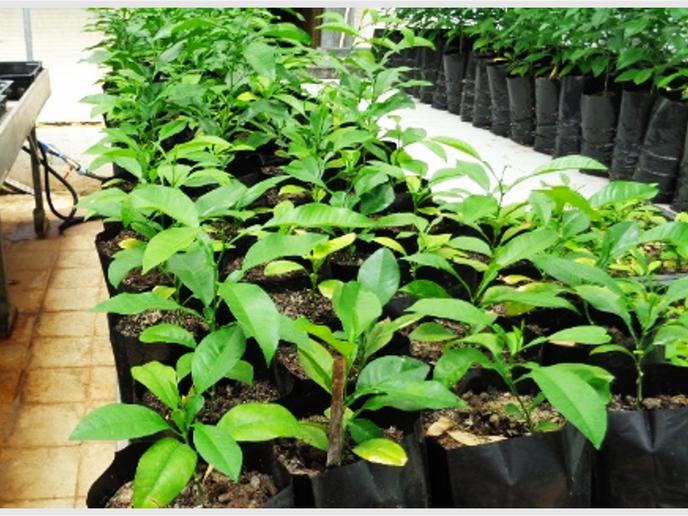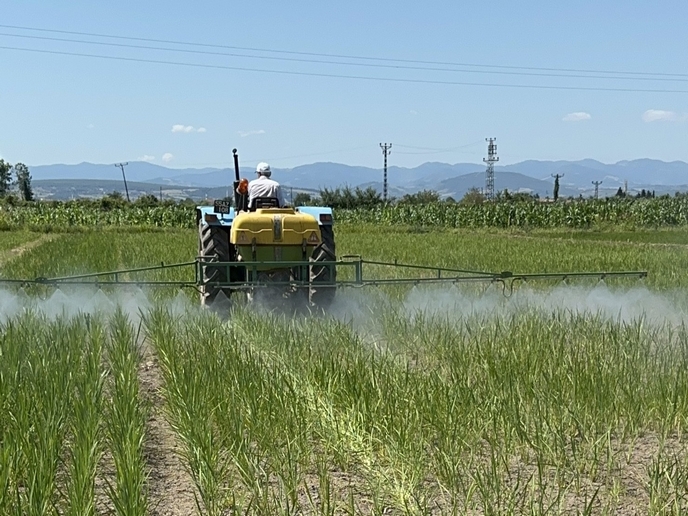Tackling citrus pests head on
The EU is transitioning towards sustainable food systems, and as part of this transition, it aims to reduce the use of chemical pesticides. Biopesticides, in particular, represent a realistic alternative to petroleum-based chemical pesticides. However, optimising bioproduction and obtaining new exploitable formulated bioproducts face scientific and technological challenges. This is where the EU-funded IPM-4-Citrus(opens in new window) project, with the support of the Marie Skłodowska-Curie Actions programme, stepped in. Taking a multidisciplinary approach, the project set out to develop bioprocesses for a circular bioeconomy and study and manage changes in scale in biotechnology. “More specifically, we aimed to develop two new biopesticides (delta endotoxins) produced by the BLB1 and LIP strains of Bacillus thuringiensis subspecies kurstaki (Btk) that are active against citrus pests: butterflies and moths,” explains Luc Fillaudeau, project coordinator and research director at the National Institute for Agriculture, Food, and Environment in France.
Validating an alternative, low-cost biopesticide
From a technological standpoint, four dimensions of innovation were validated or explored during the IPM-4-Citrus project. “Firstly, we validated a robust fermentation process with low-cost raw material using two endemic Btk strains,” confirms Fillaudeau. Furthermore, alternative configuration of instrumentation for real-time process monitoring was validated and explored, and standards and norms for Bacillus thuringiensis production process for the Middle East and North Africa (MENA) region and sub-Saharan African countries were also investigated. Additionally, the project validated an innovative application strategy for controlling leaf miner insects through epidermis. “From an academic standpoint, dissemination and valorisation through 27 communications and publications (7 scientific papers) is an excellent marker of our scientific and technical activity,” highlights Fillaudeau. For example, two models have been proposed to describe protein and spore production(opens in new window) by Btk LIP. The calibration of the models allowed researchers to calculate the kinetic parameters and was well-fitted with the experimental data set. “The results showed that optimisation based on a model control strategy maximised protein and spore productivity,” notes Fillaudeau. The simulations were performed with Btk HD1, LIP and BLB1 strains under different experimental conditions to prove their robustness. “Considering production and formulation, our results include transfer of the fermentation protocols, down streaming process and the establishment of quality control up to the standardisation of the protocol,” reports Fillaudeau. As for the efficacy of the final product, project activity reports showed that the efficacy in the field of formulated BLB1 and LIP is at least comparable to the gold standard. “Considering human risk assessment and environment ecotoxicology, an overview of acute and subacute toxicity assessment on target and nontarget organisms was realised and reported,” adds Fillaudeau.
Bringing to market new biopesticides
“By validating the efficacy of the formulations obtained through laboratory and field tests, the project has paved the way for the potential commercial exploitation of two new biopesticides. Scaling up, integrating industrial production, and formulating a cost-effective product are currently the most important challenges to tackle,” concludes Fillaudeau. The project’s work has also laid the groundwork to help others overcome plant pests. For example, the MEDIS laboratories are developing a plant in Nabeul, Tunisia, to produce formulations of Btk based biological control agents for citrus following the results and expertise of the IPM-4-Citrus consortium. They are targeting the MENA markets by 2023. Furthermore, the project’s consortium will continue their work in the PRIMA SAFWA(opens in new window) project, which aims to tackle other plant pests with the same bioproducts.







